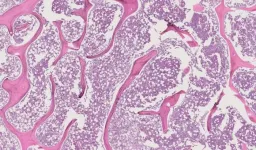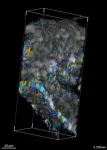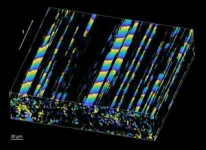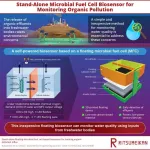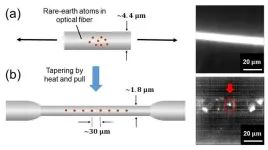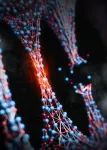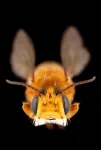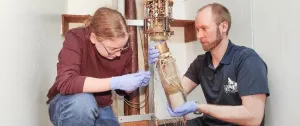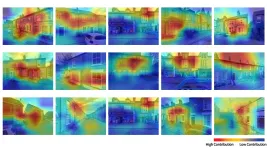(Press-News.org) A research team at Johns Hopkins Medicine has created and trained a machine learning model to calculate percent necrosis (PN) — or, what percentage of a tumor is “dead” and no longer active — in patients with osteosarcoma, a type of bone cancer. The model’s calculation was 85% correct when compared to the results of a musculoskeletal pathologist. Upon removing one outlier, the accuracy rose to 99%.
A post-chemotherapy PN calculation helps provide the patient with a prognosis for survival. For example, a PN of 99% indicates that 99% of the tumor is dead, suggesting chemotherapy was effective and the patient has improved odds of surviving. Pathologists calculate PN by looking at, interpreting and annotating whole-slide images (WSIs), which are thinly sliced sections of a specimen (bone tissue, in this context) that are mounted onto slides for microscopic analysis.
“Calculating the PN is a labor-intensive process that requires a lot of annotation data from the musculoskeletal pathologist,” says Christa LiBrizzi, M.D., co-first author of the study and a resident with Johns Hopkins Medicine’s Department of Orthopaedic Surgery. “Additionally, it has low interobserver reliability, meaning that two pathologists trying to calculate a PN from the same WSIs will often report different conclusions. Due to these factors, we thought trying to calculate a PN by alternate means was a worthwhile effort.”
The team sought to develop a “weakly supervised” machine learning model, one that required minimal annotation data to be trained on. Training the model this way would mean that a musculoskeletal pathologist using the model to calculate a patient’s PN would only need to provide it with partially annotated WSIs, thus reducing the pathologist’s labor burden.
First, the team gathered data, including WSIs, from the pathology archives of Johns Hopkins’ U.S. tertiary cancer center. All data came from patients with intramedullary osteosarcoma — that is, osteosarcoma that originated in the center of the bone — who underwent chemotherapy and surgery at the center between 2011 and 2021. The team then had a musculoskeletal pathologist partially annotate three types of tissue on each of the gathered WSIs: active tumor, dead tumor and non-tumor tissue. The pathologist also estimated the PN for each patient. Using this information, the team began to train the model.
“We decided to train the model by teaching it to recognize image patterns,” says Zhenzhen Wang, co-first author of the study and a doctoral student in biomedical engineering at the Johns Hopkins University School of Medicine. “We segregated the WSIs into thousands of small patches, then divided the patches into groups based on how they were labeled by the pathologist. Finally, we fed these grouped patches into the model to train it. We thought this would give the model a more robust frame of reference than simply feeding it one large WSI and risking missing the forest for the trees.”
After being trained, the model and the musculoskeletal pathologist were given six WSIs to interpret from two osteosarcoma patients. Results showed an 85% positive correlation between the model and the pathologist’s PN calculations and tissue labeling. The model did not always properly label cartilage, which led to an outlier due to an abundance of cartilage on one WSI. When the outlier was removed, the correlation increased to 99%.
“If this model were to be validated and produced, it could help expediate the evaluation of chemotherapy’s effectiveness on a patient — and thus, get them a prognosis estimate sooner,” says LiBrizzi. “That would reduce health care costs, as well as labor burdens on musculoskeletal pathologists.”
In future studies, the team aims to include cartilage tissue in the model’s training and to diversify the WSIs to include other types of osteosarcoma beyond intramedullary.
The study was published online Oct. 5 in the Journal of Orthopaedic Research.
END
Johns Hopkins Medicine researchers create machine learning model to calculate chemotherapy success in patients with osteosarcoma
The model’s results correlated 85% with those calculated by a musculoskeletal pathologist
2023-11-02
ELSE PRESS RELEASES FROM THIS DATE:
Regenstrief’s Hickman to be inducted as Gerontological Society of America fellow
2023-11-02
INDIANAPOLIS — Regenstrief Institute’s Susan Hickman, PhD, has been elected as a fellow of the Gerontological Society of America (GSA). Dr. Hickman will be inducted on November 9 into the social research, policy and practice section of the GSA College of Fellows during the society’s 2023 annual scientific meeting.
In addition to being director and a research scientist with the IU Center for Aging Research at Regenstrief Institute, Dr. Hickman is a professor at Indiana University School of Nursing, the Pettinga Chair in Aging Research with the Indiana University School of Medicine and the co-director of the IUPUI ...
Menopause and heart health – 4 tips for a healthy heart while your body is changing
2023-11-02
DALLAS, Nov. 2, 2023 — Medical experts note that hormone and body composition changes during the transition to menopause can increase the risk of developing heart disease after menopause.[1] The American Heart Association, a global force for healthier lives for all, offers tips to support women’s heart health during this transition.
“More women in the U.S. are living longer, and a significant portion of them will spend up to 40% of their lives postmenopausal,” said Brooke Aggarwal, Ed.D., M.S., F.A.H.A., assistant professor of medical sciences in Cardiology ...
Self-powered microbial fuel cell biosensor for monitoring organic freshwater pollution
2023-11-02
The discharge of organic effluents—biodegradable waste materials from plants and animals—into freshwater bodies is a significant environmental concern, affecting the health and sustainability of these aquatic ecosystems. However, the methods currently available for inspecting water quality are complex and costly.
In this regard, researchers from Ritsumeikan University, Japan, have recently developed a self-powered, inexpensive, and floating biosensor for monitoring water quality at the input of freshwater lakes and rivers. This paper was made available online on September 9, 2023, and was published in Volume 200 of the Biochemical Engineering ...
Optical-fiber based single-photon light source at room temperature for next-generation quantum processing
2023-11-02
Quantum-based systems promise faster computing and stronger encryption for computation and communication systems. These systems can be built on fiber networks involving interconnected nodes which consist of qubits and single-photon generators that create entangled photon pairs.
In this regard, rare-earth (RE) atoms and ions in solid-state materials are highly promising as single-photon generators. These materials are compatible with fiber networks and emit photons across a broad range of wavelengths. Due to their wide spectral range, optical fibers ...
The influence of media narratives on microplastics risk perception revealed
2023-11-02
In a world increasingly aware of the environmental challenges posed by microplastics, a pioneering study conducted by Ruxandra Malina Petrescu-Mag from Babes-Bolyai University, and published in PeerJ Life & Environment, sheds new light on the impact of media narratives on public perception and awareness of microplastic risks.
Microplastics - tiny plastic particles that pollute both terrestrial and marine ecosystems - have garnered significant scientific, media, and public attention in recent years. However, this study reveals a lack of consensus between the scientific community and the media, particularly when it comes to how ...
TU Delft researchers discover new ultra strong material for microchip sensors
2023-11-02
Researchers at Delft University of Technology, led by assistant professor Richard Norte, have unveiled a remarkable new material with potential to impact the world of material science: amorphous silicon carbide (a-SiC). Beyond its exceptional strength, this material demonstrates mechanical properties crucial for vibration isolation on a microchip. Amorphous silicon carbide is therefore particularly suitable for making ultra-sensitive microchip sensors.
The range of potential applications is vast. From ultra-sensitive microchip sensors and advanced solar ...
Buzz around new centralized pollination portal for better global bee data
2023-11-02
A powerful new way to fill major gaps in public bee data – including from Africa, Asia and other under-reported zones – has been addressed with a centralised tool for consolidating bee pollinator occurrences around the globe.
Called BeeBCD, the package outlined in a new Nature journal article, brings together more than 18 million bee occurrence records from multiple public and private databases to improve accuracy and accessibility of species data from around the world for future conservation, research and farming management.
The rationalised bee occurrence datasets will help support future plant and crop production ...
What a “2D” quantum superfluid feels like to the touch
2023-11-02
Researchers from Lancaster University in the UK have discovered how superfluid helium 3He would feel if you could put your hand into it.
The interface between the exotic world of quantum physics and classical physics of the human experience is one of the major open problems in modern physics.
Dr Samuli Autti is the lead author of the research published in Nature Communications.
Dr Autti said: “In practical terms, we don’t know the answer to the question ‘how does it feel to touch quantum physics?’
“These experimental conditions are extreme and the techniques complicated, but I can now tell ...
NIH grants support UCLA and Charles Drew University researchers' efforts to end HIV epidemic
2023-11-02
NIH grants support UCLA and Charles Drew University researchers' efforts to end HIV epidemic
The National Institutes of Health (NIH) has granted $2.1 million to UCLA’s Center for HIV Identification, Prevention, and Treatment Services (CHIPTS) and the UCLA-CDU Center for AIDS Research (CFAR) to support four research projects and an implementation science consultation hub. These awards will fund projects to strengthen research-community collaborations and enhance implementation strategies needed for the Ending the HIV Epidemic in the U.S. (EHE) initiative.
“These awards will support our scientists and ...
AI trained to identify least green homes by Cambridge researchers
2023-11-02
University of Cambridge media release
First of its kind AI-model can help policy-makers efficiently identify and prioritize houses for retrofitting and other decarbonizing measures.
FOR IMMEDIATE RELEASE
Model identified ‘hard to decarbonize’ houses with 90% precision and additional data will improve this.
Model trained with open source data including from energy performance certificates, and street and aerial view images. It could be used anywhere in the world.
Model can even identify specific parts of houses losing most heat, including roofs and windows.
‘Hard-to-decarbonize’ (HtD) houses are responsible ...
LAST 30 PRESS RELEASES:
Tracing the quick synthesis of an industrially important catalyst
New software sheds light on cancer’s hidden genetic networks
UT Health San Antonio awarded $3 million in CPRIT grants to bolster cancer research and prevention efforts in South Texas
Third symposium spotlights global challenge of new contaminants in China’s fight against pollution
From straw to soil harmony: International team reveals how biochar supercharges carbon-smart farming
Myeloma: How AI is redrawing the map of cancer care
Manhattan E. Charurat, Ph.D., MHS invested as the Homer and Martha Gudelsky Distinguished Professor in Medicine at the University of Maryland School of Medicine
Insilico Medicine’s Pharma.AI Q4 Winter Launch Recap: Revolutionizing drug discovery with cutting-edge AI innovations, accelerating the path to pharmaceutical superintelligence
Nanoplastics have diet-dependent impacts on digestive system health
Brain neuron death occurs throughout life and increases with age, a natural human protein drug may halt neuron death in Alzheimer’s disease
SPIE and CLP announce the recipients of the 2025 Advanced Photonics Young Innovator Award
Lessons from the Caldor Fire’s Christmas Valley ‘Miracle’
Ant societies rose by trading individual protection for collective power
Research reveals how ancient viral DNA shapes early embryonic development
A molecular gatekeeper that controls protein synthesis
New ‘cloaking device’ concept to shield sensitive tech from magnetic fields
Researchers show impact of mountain building and climate change on alpine biodiversity
Study models the transition from Neanderthals to modern humans in Europe
University of Phoenix College of Doctoral Studies releases white paper on AI-driven skilling to reduce burnout and restore worker autonomy
AIs fail at the game of visual “telephone”
The levers for a sustainable food system
Potential changes in US homelessness by ending federal support for housing first programs
Vulnerability of large language models to prompt injection when providing medical advice
Researchers develop new system for high-energy-density, long-life, multi-electron transfer bromine-based flow batteries
Ending federal support for housing first programs could increase U.S. homelessness by 5% in one year, new JAMA study finds
New research uncovers molecular ‘safety switch’ shielding cancers from immune attack
Bacteria resisting viral infection can still sink carbon to ocean floor
Younger biological age may increase depression risk in older women during COVID-19
Bharat Innovates 2026 National Basecamp Showcases India’s Most Promising Deep-Tech Ventures
Here’s what determines whether your income level rises or falls
[Press-News.org] Johns Hopkins Medicine researchers create machine learning model to calculate chemotherapy success in patients with osteosarcomaThe model’s results correlated 85% with those calculated by a musculoskeletal pathologist
